While often overshadowed by flashier retail events like Black Friday or Valentine’s Day, Father’s Day remains a highly valuable opportunity for brand engagement and revenue generation. In the U.S. alone, Father’s Day spending has steadily climbed in recent years, with consumers expected to shell out over $20 billion annually on gifts, experiences, and personalized services. This commercial momentum makes it a critical touchpoint in the marketing calendar for brands aiming to stay culturally relevant.
More importantly, Father’s Day campaign ideas present a unique emotional canvas—one that allows marketers to tap into personal memories, gratitude, and the evolving dynamics of modern fatherhood. At a time when consumers are demanding more authenticity and emotional resonance from the brands they support, campaigns built around this holiday can drive not only short-term conversions but long-term brand equity.
For marketing professionals, business owners, and corporate strategists aged 22 to 45, this is more than just another sales window—it’s a strategic opportunity to connect deeply with audiences, differentiate through meaningful storytelling, and demonstrate brand values in action.
Understanding the Audience: Who Are You Really Targeting?
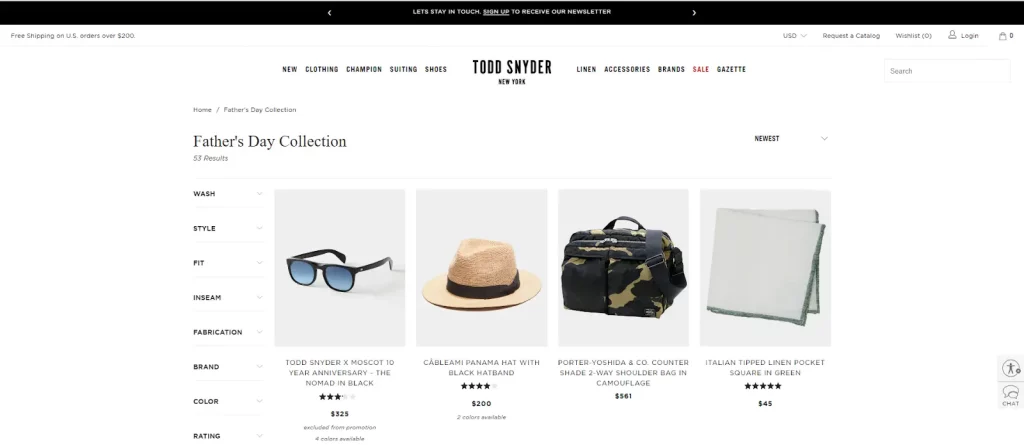
Successful Father’s Day campaign ideas begin with a clear understanding of the audience—not just “dads,” but the people buying for them. In reality, the majority of Father’s Day purchases come from children, spouses, and increasingly, even co-workers or corporate partners seeking to gift employees or clients. This complex buyer ecosystem calls for precision targeting, nuanced messaging, and creative segmentation.
Demographically, younger generations like Millennials and Gen Z are shaping new narratives around fatherhood. They prioritize experiences over material goods, value inclusive representations of family structures, and are more responsive to purpose-driven messaging. Meanwhile, Gen X and older audiences often favor practicality and brand trust, especially when making high-ticket purchases.
For B2C and B2B marketers alike, this presents an opportunity to build layered campaigns—ones that cater to different buyer personas with tailored offers, formats, and emotional triggers. Whether you're selling grooming kits, digital subscriptions, or launching a branded content series about fatherhood, understanding who’s buying (and why) is the first step to crafting campaigns that actually convert.
Top Performing Father’s Day Campaign Ideas (with Examples)
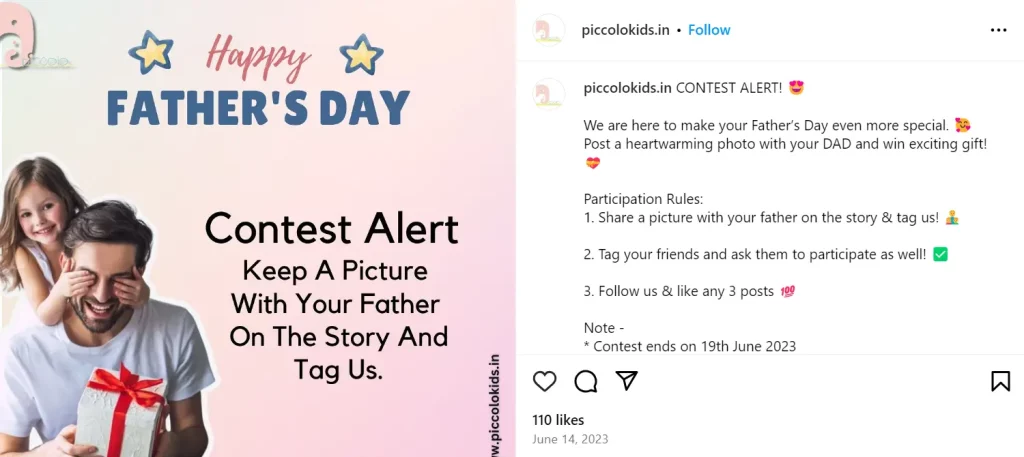
In today’s attention economy, successful Father’s Day campaign ideas go beyond discount codes and generic greetings. The brands that win are those that understand how to blend utility, storytelling, and platform-native creativity into experiences that resonate. Below are high-performing campaign formats that have delivered strong results across industries.
1. Personalized Gift Guides with Intentional Curation
Instead of offering a one-size-fits-all product list, brands are using AI and behavioral data to build dynamic gift guides based on lifestyle and personality traits. Think: “For the Adventure-Seeking Dad” or “For the Dad Who Has Everything.” Retailers like Amazon and Uncommon Goods have used this tactic to improve both AOV and click-through rates.
2. User-Generated Content Campaigns
Encouraging customers to share heartfelt stories or old photos with their fathers can spark emotional engagement while generating brand-owned content. Brands like Dove Men+Care and Subaru have leveraged this approach to authentically align with themes of legacy, gratitude, and growth.
3. Interactive Social Campaigns
Polls, quizzes, and augmented reality (AR) filters have become staples for high-engagement storytelling. For example, a “Which Kind of Dad Are You?” Instagram filter can build both virality and brand association in younger demographics.
4. Lifecycle-Based Email Journeys
Triggered email sequences around Father’s Day—reminders, wishlist nudges, last-minute gift suggestions—have been shown to increase conversions by up to 20%. Especially effective for e-commerce and subscription services looking to drive timely action.
5. Limited-Time Bundles and Loyalty Incentives
Father’s Day offers an opportunity to bundle products, introduce exclusive drops, or reward loyal customers with early access. Brands like Nike and Jack Daniel’s have launched Father’s Day-exclusive SKUs or collector’s items to spark FOMO and community engagement.
Ultimately, the most effective Father’s Day campaign ideas are those that serve real value while telling a story—whether that means saving shoppers time, honoring real relationships, or reinforcing what the brand stands for.
Digital-First Strategies: Maximizing Omnichannel Presence
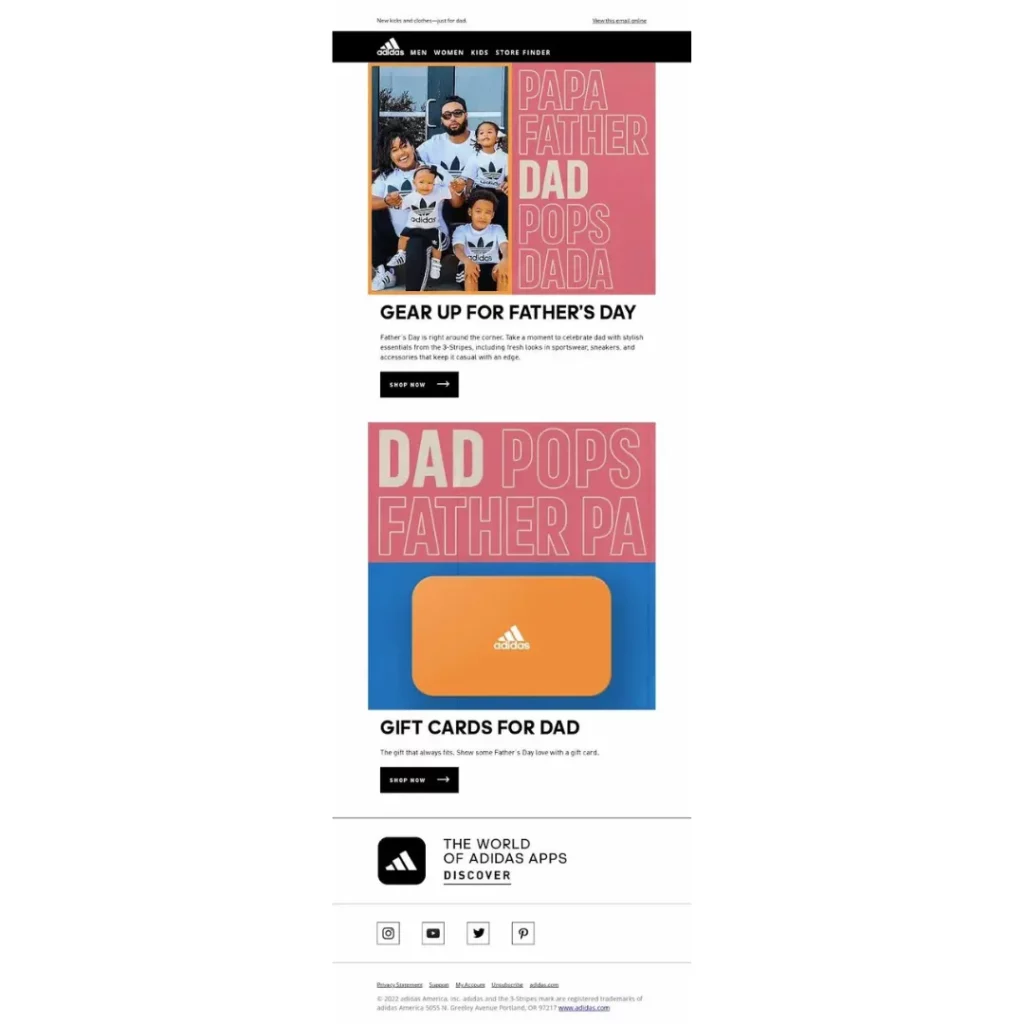
In an era where digital touchpoints define brand perception, the most successful Father’s Day campaign ideas are those designed with a digital-first mindset. From social storytelling to hyper-personalized ads, modern campaigns need to meet consumers where they are—online, mobile, and constantly scrolling.
Social Media Video & Reels
Short-form video continues to dominate user attention, particularly on platforms like Instagram Reels, YouTube Shorts, and TikTok. Brands that craft bite-sized narratives—whether humorous skits about fatherhood or heartfelt montages—can drive massive organic reach. The Home Depot’s DIY-themed Father’s Day content, for example, connects functional value with emotional resonance.
Geo-Targeted and Intent-Based Google Ads
For local businesses or service providers, geo-targeted Google Ads tailored to last-minute gift searches (e.g., “best Father’s Day lunch NYC”) deliver high conversion potential. Layering these with shopping intent keywords and compelling copy increases visibility right when decision-making peaks.
Influencer Collaborations and Livestreams
Partnering with parent influencers or thought leaders to host livestream shopping sessions or Father’s Day discussions builds both reach and authenticity. Platforms like Amazon Live and TikTok Shop have made it easier to combine commerce with content in real time.
AI-Driven Personalization
Using customer data to personalize landing pages, email content, and retargeting ads ensures relevance—especially in saturated inboxes and feeds. Brands that segment audiences by past behavior or gift-giving patterns can deliver smarter, more efficient campaign touchpoints.
Mobile-Optimized Experiences
Over 70% of Father’s Day-related searches occur on mobile. That means slow-loading sites, clunky checkout flows, or poorly designed creatives will cost sales. Every campaign should be mobile-first by design—visually engaging, quick to navigate, and frictionless to purchase.
By integrating these digital-first tactics, brands not only drive results but also build meaningful interactions—turning a single holiday campaign into a long-term engagement engine.
Digital-First Strategies: Maximizing Omnichannel Presence

In an era where digital touchpoints define brand perception, the most successful Father’s Day campaign ideas are those designed with a digital-first mindset. From social storytelling to hyper-personalized ads, modern campaigns need to meet consumers where they are—online, mobile, and constantly scrolling.
Social Media Video & Reels
Short-form video continues to dominate user attention, particularly on platforms like Instagram Reels, YouTube Shorts, and TikTok. Brands that craft bite-sized narratives—whether humorous skits about fatherhood or heartfelt montages—can drive massive organic reach. The Home Depot’s DIY-themed Father’s Day content, for example, connects functional value with emotional resonance.
Geo-Targeted and Intent-Based Google Ads
For local businesses or service providers, geo-targeted Google Ads tailored to last-minute gift searches (e.g., “best Father’s Day lunch NYC”) deliver high conversion potential. Layering these with shopping intent keywords and compelling copy increases visibility right when decision-making peaks.
Influencer Collaborations and Livestreams
Partnering with parent influencers or thought leaders to host livestream shopping sessions or Father’s Day discussions builds both reach and authenticity. Platforms like Amazon Live and TikTok Shop have made it easier to combine commerce with content in real time.
AI-Driven Personalization
Using customer data to personalize landing pages, email content, and retargeting ads ensures relevance—especially in saturated inboxes and feeds. Brands that segment audiences by past behavior or gift-giving patterns can deliver smarter, more efficient campaign touchpoints.
Mobile-Optimized Experiences
Over 70% of Father’s Day-related searches occur on mobile. That means slow-loading sites, clunky checkout flows, or poorly designed creatives will cost sales. Every campaign should be mobile-first by design—visually engaging, quick to navigate, and frictionless to purchase.
By integrating these digital-first tactics, brands not only drive results but also build meaningful interactions—turning a single holiday campaign into a long-term engagement engine.
Brand Storytelling That Resonates
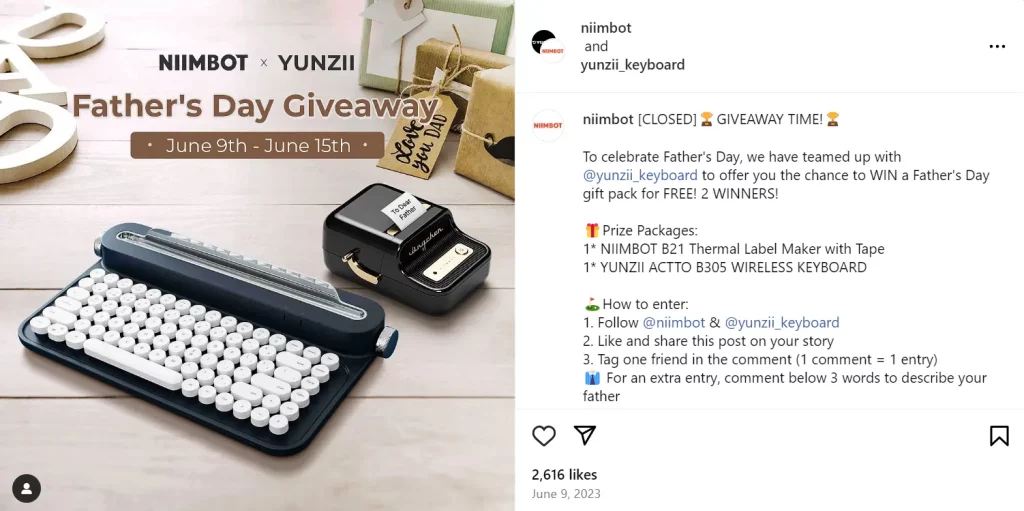
Behind every gift on Father’s Day is a story—a memory, a lesson, a moment that shaped who we are. The most effective Father’s Day campaign ideas don’t just sell products; they tell stories that people see themselves in. For modern marketers, this is the space where brand equity is built.
The Power of Legacy and Nostalgia
Emotions tied to fatherhood—respect, gratitude, admiration—are deeply personal, yet universal. Campaigns that lean into nostalgia, such as sharing vintage father-child photos or evoking generational wisdom, tap into this emotional depth. Guinness famously did this with its “Made of More” campaign, celebrating everyday fathers as silent heroes.
Authenticity Over Archetypes
Today’s audiences are sensitive to clichés. The outdated image of the stoic, grill-loving dad doesn’t resonate with the diverse realities of fatherhood in 2025. Brands like Dove Men+Care have successfully challenged stereotypes by portraying nurturing, emotionally available fathers. These authentic depictions not only feel more human but also reflect the evolving values of younger consumers.
Inclusion and Representation
Whether it’s showcasing single dads, LGBTQ+ parents, or blended families, inclusive storytelling makes campaigns more relevant and respectful. It also broadens your audience base. When done right, it signals that your brand sees and values every kind of father—not just the traditional mold.
Visual Consistency and Narrative Flow
Strong storytelling isn’t limited to video. From ad copy to landing pages, packaging to post-purchase emails, every element should carry the same emotional thread. Cohesive narratives elevate campaign cohesion and reinforce your brand voice.
At its core, brand storytelling around Father’s Day isn’t about making noise—it’s about making meaning. And in a marketing landscape driven by trust and connection, meaning is what converts browsers into buyers and buyers into believers.
Mistakes to Avoid in Father’s Day Campaigns
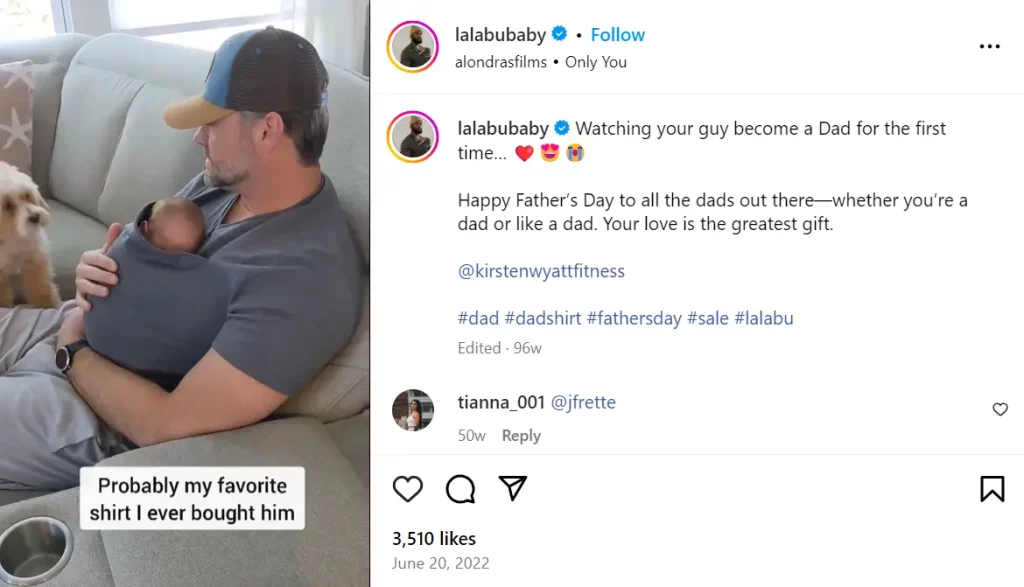
Even the best Father’s Day campaign ideas can fall flat if they’re not executed with sensitivity, relevance, and strategic alignment. For brands aiming to build trust while driving sales, avoiding these common pitfalls is just as important as choosing the right creative direction.
1. Over-Commercializing Without Emotional Depth
A banner ad that simply says “Father’s Day Sale – 20% Off” won’t move the needle in a saturated market. Consumers expect more than price tags—they want stories, meaning, and experiences. A campaign that feels transactional rather than thoughtful can damage brand perception, especially during a holiday centered on personal connection.
2. Relying on Outdated or Stereotypical Tropes
Grilling, golf clubs, and power tools have their place—but when every brand recycles the same “dad clichés,” it creates fatigue and risks alienating diverse audiences. Avoid defaulting to masculine stereotypes. Instead, consider portraying real moments of fatherhood that reflect your customer base today.
3. Excluding Non-Traditional Family Structures
Campaigns that assume every consumer has a present or positive relationship with their father may come off as tone-deaf. Inclusive messaging—acknowledging father figures, mentors, or chosen family—broadens appeal while showing cultural awareness.
4. Launching Too Late (or Without a Plan)
Last-minute campaigns tend to feel rushed and underdeveloped. Without a clear funnel—awareness, consideration, conversion, and retention—you risk losing ROI. Smart marketers begin planning at least 6–8 weeks out, building momentum across platforms.
5. Failing to Track and Learn
A well-run campaign isn’t just about execution—it’s about measurement. If you're not tracking engagement, attribution, and conversion rates, you’re missing out on valuable insights that could optimize not just this campaign, but your entire annual strategy.
Avoiding these missteps will not only protect your brand from backlash or indifference—it will position you to create meaningful connections that drive both immediate performance and lasting loyalty.
Measuring Success: KPIs and ROI
No matter how creative your Father’s Day campaign ideas may be, without clear measurement frameworks, you’re operating on guesswork. For modern marketers, data isn’t just a post-mortem exercise—it’s a real-time compass that guides creative, spend, and strategic optimization.
Set Campaign-Specific KPIs from the Start
Begin by aligning campaign goals with measurable outcomes. Are you driving product sales, increasing email opt-ins, or building top-of-funnel brand awareness? Each goal demands its own metric—think CTR for digital ads, ROAS for e-commerce promotions, engagement rate for social media content, or lift in branded search for awareness campaigns.
Track Across the Funnel
Father’s Day campaigns typically have a short lifecycle, but that doesn’t mean the funnel disappears. Use multi-touch attribution tools to track how users move from ad exposure to action. Are customers discovering you through a UGC video but converting via email? Are in-store purchases influenced by online promotions? These insights help allocate resources more effectively.
Leverage A/B Testing and Real-Time Optimization
Test everything—subject lines, CTA placements, imagery, and even tone. Small iterations can yield significant returns. Monitor performance daily during the final 10 days leading to Father’s Day when decision-making peaks, and don’t hesitate to adjust spend or messaging mid-flight.
Post-Campaign Analysis: Beyond the Numbers
Once the campaign ends, go deeper than vanity metrics. Did the campaign attract new customers or re-engage existing ones? How did engagement compare to other seasonal events? Use these insights to refine next year’s strategy—and, more importantly, to develop evergreen content that extends the life of your Father’s Day investment.
In today’s competitive landscape, successful marketing isn’t about who shouts the loudest. It’s about who listens, measures, and adapts fastest. And that’s where high-performing Father’s Day campaign ideas transform from seasonal plays into long-term growth engines.





